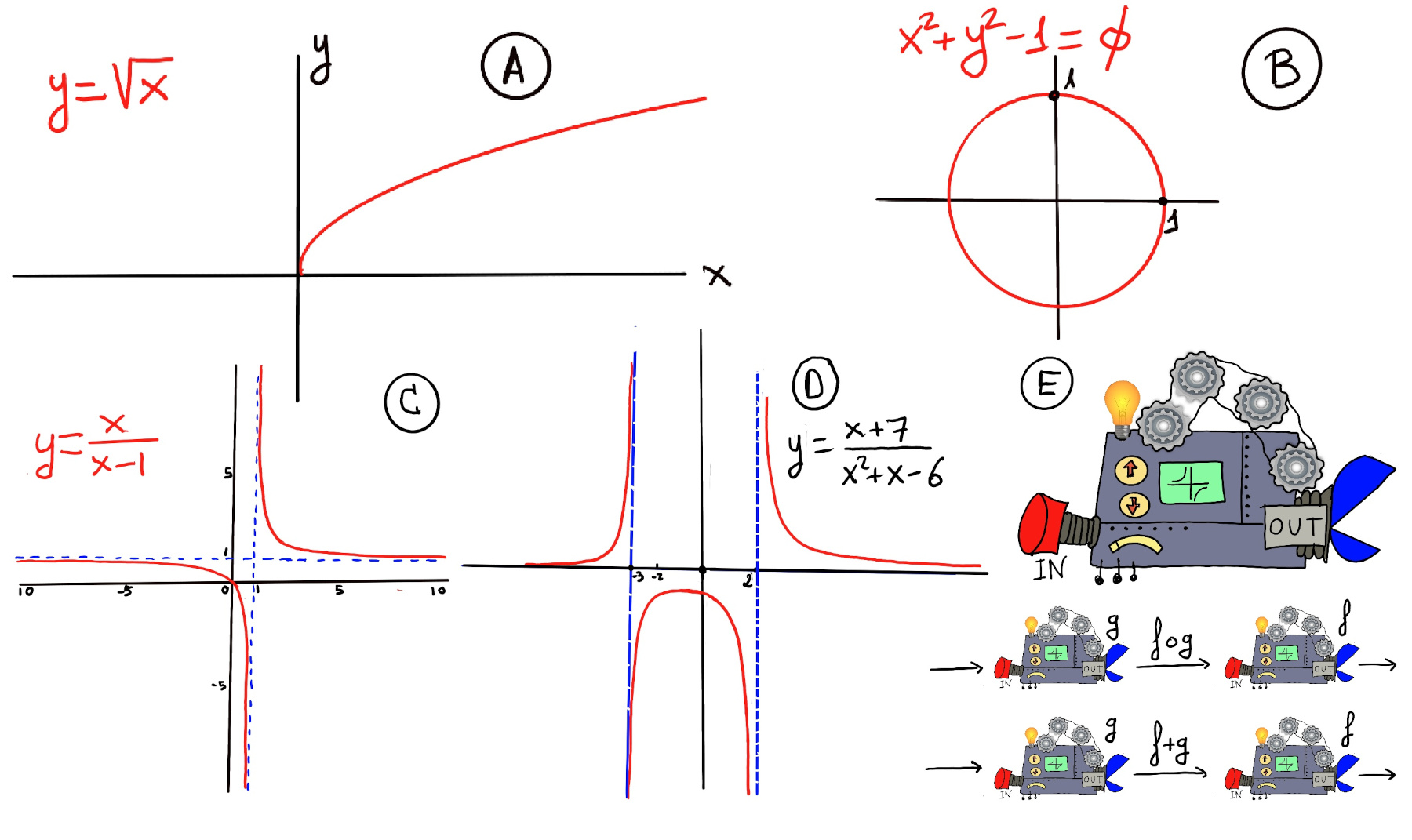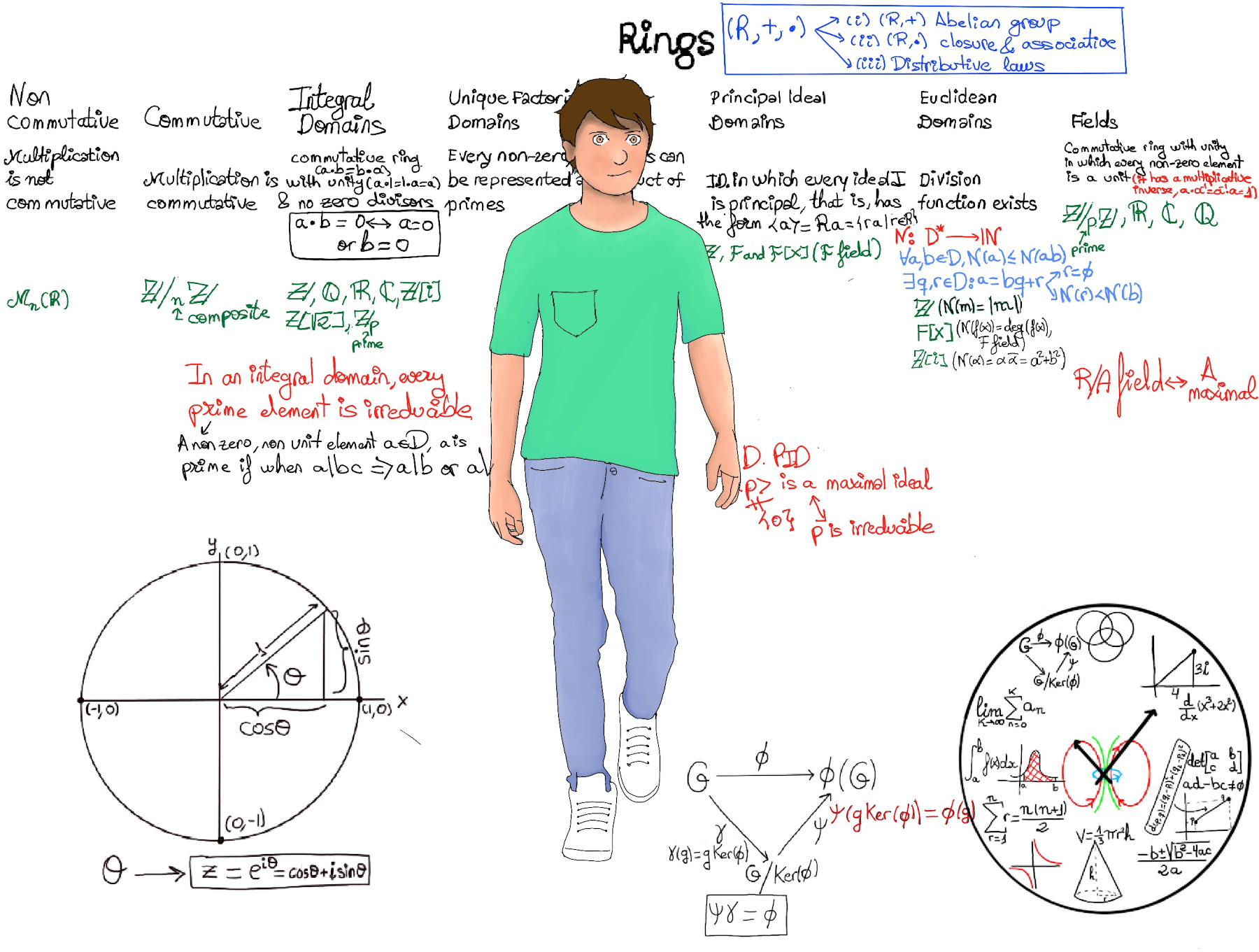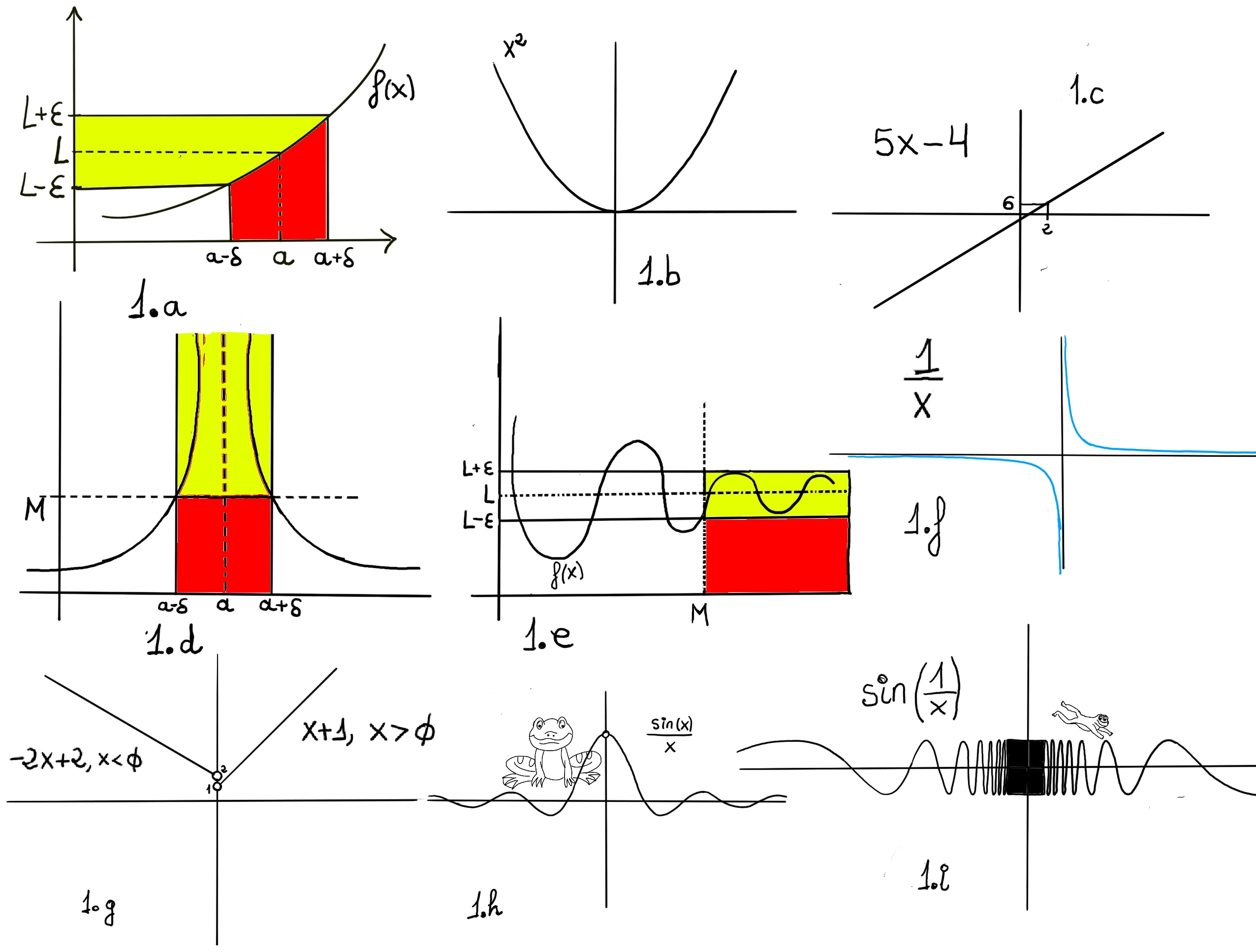
|
 |
 |

|
 |
 |
It may be worth noting that there are no uninteresting numbers. Proof (induction): Assume there are uninteresting numbers. There must be a smallest uninteresting number. That makes it interesting, since it is the smallest uninteresting number. thus producing a contradiction.
Definition. A function f is a rule, relationship, or correspondence that assigns to each element of one set (x ∈ D), called the domain, exactly one element of a second set, called the range (y ∈ E).
The pair (x, y) is denoted as y = f(x). Typically, the sets D and E will be both the set of real numbers, ℝ. A mathematical function is like a black box that takes certain input values and generates corresponding output values (Figure E).

Very loosing speaking, a limit is the value to which a function grows close as the input get closer and closer to some other given value.
One would say that the limit of f, as x approaches a, is L, and would write it as $\lim_{x \to a} f(x) = L$. Formally, for every real ε > 0, there exists a real δ > 0 such that for all real x, 0 < | x − a | < δ implies that | f(x) − L | < ε. In other words, f(x) gets closer and closer to L, f(x)∈ (L-ε, L+ε), as x moves closer and closer -approaching closer but never touching- to a (x ∈ (a-δ, a+δ), x≠a)) -Fig 1.a.-

Definition. Let f(x) be a function defined on an interval that contains x = a, except possibly at x = a, then we say that, $\lim_{x \to a} f(x) = L$ if
$\forall \epsilon>0, \exists \delta>0: 0<|x-a|<\delta, implies~ |f(x)-L|<\epsilon$
Or
$\forall \epsilon>0, \exists \delta>0: |f(x)-L|<\epsilon, whenever~ 0<|x-a|<\delta$

Definition. Let f(x) be a function defined on an interval that contains x = a, except possibly at x = a, then we say that, $\lim_{x \to a} f(x) = \infty$ if $\forall M>0, \exists \delta>0: f(x) > M, whenever~ 0<|x-a|<\delta.$
Loosely speaking, We can make the value of f(x) arbitrary large by taking x to be arbitrary close, but never touching at x = a. -Figure 1.d.-
Definition. Let f(x) be a function defined on an interval that contains x = a, except possibly at x = a, then we say that, $\lim_{x \to a} f(x) = -\infty$ if $\forall M<0, \exists \delta>0: f(x) < M, whenever~ 0<|x-a|<\delta.$
Loosely speaking, we can make the value of f(x) arbitrary small by taking x to be sufficiently close, but never equal to a.

The vertical asymptote of a function y = f(x) is a vertical line, say x = a, when y → ∞ or y → -∞. Mathematically, if x = k is the vertical asymptote of a function y = f(x) then at least one of the following would hold true:
A vertical asymptote is a vertical line (x = k) marking a specific value toward which the graph of a function may approach, but will never reach, that is, the function becomes unbounded (either y tends to ∞ or -∞) but it doesn’t touch or cross the curve.

Recall that the domain of the tangent function is all real numbers except for π/2+nπ, n ∈ ℤ, because at those values the tangent function is undefined. The vertical lines through these x-values are the vertical asymptotes of the graph.

Approaching 0 from the left (x < 0), f(x) becomes 1/x and the function decreases to minus infinity -∞, $\lim_{x \to 0⁻} f(x) = \lim_{x \to 0⁻} \frac{1}{x} = -∞$. Approaching 0 from the right (x > 0), f(x) becomes cos(x) and we get closer and closer to 1, $\lim_{x \to 0⁺} f(x) = \lim_{x \to 0⁺} cos(x) = 1$.
Therefore, $\lim_{x \to 0} f(x)$ does not exist because the left and right limits are different, (figure 3).
$\lim_{x \to 2⁻} f(x) = \frac{1}{x-2} = -∞, \lim_{x \to 2⁺} f(x) = ln(x-2) = -∞$, hence $\lim_{x \to -5} f(x) = -∞$ (Figure iv).
$\forall M>0, \exists \delta>0: \frac {1}{x^{2}} > M, whenever~ 0<|x|<\delta.$
Let’s choose $\delta = \frac {1}{\sqrt M}$
$\forall M>0, \exists \delta = \frac {1}{\sqrt M}>0: \frac {1}{x^{2}} > M, whenever~ 0<|x|<\frac {1}{\sqrt M}.$
$|x|<\frac {1}{\sqrt M} ⇨ |x|^{2}<\frac {1}{M} ⇨ x^{2}<\frac {1}{M} ⇨ M <\frac{1}{x^{2}}$

$\forall M>0, \exists \delta>0: f(x)>M, whenever~ a < x < a + \delta.$
$\forall M>0, \exists \delta>0: \frac{1}{x-3}>M, whenever~ 3 < x < 3 + \delta$
$3 < x < 3 + \delta$ ⇒ x - 3 < δ ⇒[they are positive numbers because x should be relatively close to 3 and x > 3] $\frac{1}{x-3} > \frac{1}{δ}$ ⇒[Let’s choose δ = 1/M] = $\frac{1}{\frac{1}{M}} = M.$
$\forall M>0, \exists \delta>0: \frac{x}{2x-2}>M, whenever~ 0 < x -1 < \delta$
$0 < x -1 < \delta ⇒ \frac{1}{x-1}>\frac{1}{\delta}$[🚀]
$\frac{x}{2x-2} = \frac{x}{2}\frac{1}{x-1}>🚀\frac{x}{2}·δ >$ ⇒[0 < x -1 ⇒ x > 1 ⇒ x⁄2 > 1⁄2] $\frac{1}{2δ} =$ [Choose δ = 1/(2M)] M